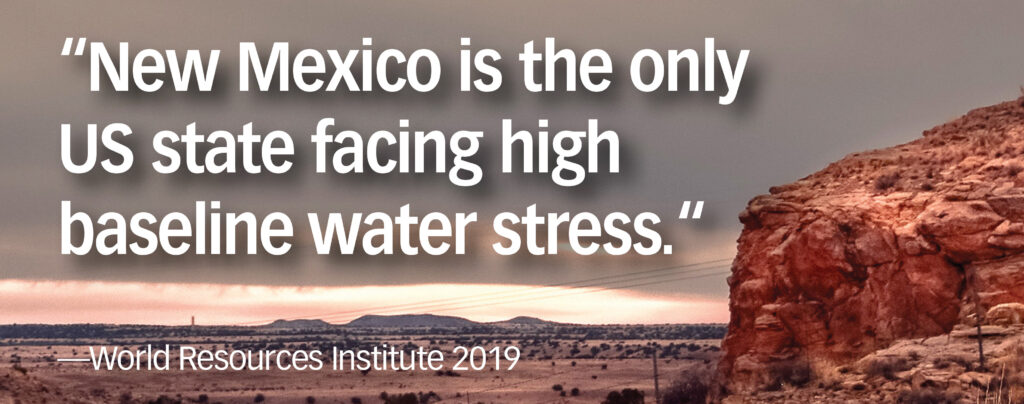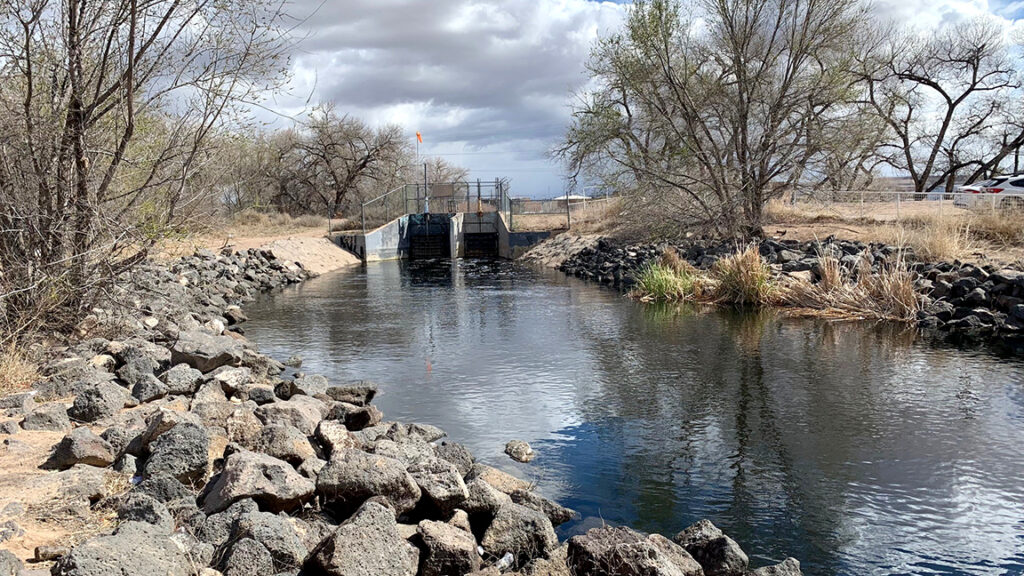by Edna Loehman

Many of us in the mid Rio Grande area take water for granted when we open the faucet or flush the toilet. We may not know anything about the processes for supplying potable water or its disposal after use. We probably notice that our water bills also contain a bill for wastewater disposal, and we may realize that our water disposal is related to our water use. But we may know very little about the water management system.
In the larger metro area, the Albuquerque Bernalillo County Water Utility Authority (ABCWUA) manages drinking water and wastewater disposal. The Albuquerque Metropolitan Statistical Area (MSA) for which census data is regularly collected includes Albuquerque as well as towns such as Estancia, Moriarty, Edgewood, Cedar Crest, and surrounding areas. Not all of the MSA is served by ABCWUA, though. ABCWUA draws on the Middle Rio Grande Basin for groundwater, while the Estancia Basin is used by many non-urban water users in the area.
Households in non-urban settings have more direct involvement in their own water supply and disposal. Non-urban households – outside of towns with municipal water supplies – get their water from groundwater wells and dispose of their wastewater through onsite (septic) treatment systems.
Metropolitan and rural areas are linked by economic and social forces; residents of non-urban areas often work and shop in the towns of metro areas. Similarly, the water situations in metro and non-urban areas are linked. Populations employed in town areas are drawn to less expensive housing in rural areas, thus increasing household groundwater use in rural areas. Consequently, groundwater in non-urban areas is being stressed, leading to drying out of wells. An extensive study of groundwater wells across the West by Perrone and Jasechko found that in the Estancia Basin in Torrance County south of Moriarty, a high proportion of wells have dried out.
To provide for the necessity of water for household uses in non-urban areas, bulk water sales have become an expanding private enterprise in which private truck owners haul tanks of water to homes. This industry is completely unregulated in terms of water quality and price. Supplying such bulk sales is straining municipal water supply for the town of Moriarty, NM, which has the only bulk-water distribution site in the East Mountain area. As groundwater problems in the Estancia Basin persist, it can be anticipated that displaced rural populations may move into the ABQ metro service region, thus increasing water demand for ABCWUA.
Hence the allusion to Dickens’ Tale of Two Cities, in this case, the metro and non-urban areas: what happens in each jurisdiction affects the other! Although both water management systems are now focusing on reuse and conservation in order to conserve groundwater supplies, the two approaches to water systems are vastly different. The metropolitan area has far more access to financial sources through the Water Authority and must answer to water quality and treatment standards set by the U.S. EPA. In contrast, non-urban systems must rely on voluntary compliance constrained by household financial situations and the limited oversight and education resources of New Mexico state agencies. See the other two articles this month, “Albuquerque Bernalillo County Water Use Authority” and “The Non-Urban Water Situation in Our Region” for more details and discussion.
In both city and country, the household is key to reducing groundwater withdrawal through behavioral changes and adopting water reuse consistent with water quality. Climate change affecting surface supplies will make such changes ever more necessary.



